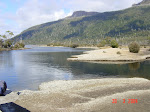
20 years Interbank Interest rate chart (1988 - 2008) - Adapted from MAS, by Paul Ho Kang Sang, www.propertybuyer.com.sg (info@propertybuyer.com.sg)
Recently i was also offered a 3-month sibor package where the monthly installments are fixed, but the principal paid varies with the interest rate.
I think it sounds like a good package as there is some certainty in the amt of monthly installments paid, but any potential pitfalls from this? And the equity accumulation is quite slow due to the length of loan.
Dear Home Buyer/Owner,
To answer your first question. It is important to understand whether you treat the property as a single home, an investment property or simply a property in which you can use as a collateral for your business.
Different people may react differently as a property can be an emotional issue/decision.
AFFORDABILITY
For some it is an affordability issue, therefore stretching the home loan will allow you to stretch your budget to buy the home of your dreams.
COST / FINANCIAL CONCERNS
Stretching the home loan incurs higher total interest cost. However some investors have been known to stretch the home loan as long as possible to maximize their return on invested capital (If this area is of interest to you, I can elaborate more). Longer term loans tend to be more costly because all loans are structured in such a way that mostly interests are paid during the earlier years. So you will see that your outstanding loan amount seems to be standing still.
On the other hand, some people may opt instead of 30 years, to take a loan of 20 years and at the end of every 2 years, they take another 20 years loan, such that the total repayment may still be 30 years, but they end up paying lesser interest. But it is rather troublesome and few people are inclined to do it.
3-Months Sibor with Fixed repayment structured. In this case, the total interests are variable and re-priced every 3 months, higher Sibor means you pay more interests and less principle. But you have some peace of mind such that you don't have to worry about how much to pay, though you are deferring the cost till later to smooth over short term financial flexibility. Over a 20 year period, interbank rates (Sibor) Singapore dollar Sibor has approached reached about 9% in around 1990. If you are paying Sibor + 0.9%, that would mean you are paying almost 10% interests. Fed overnight rates has gone as high as 20% during the recent financial crisis in which banks stop lending to each other or tightened credit drastically. So markets such as the Libor (London), Sibor (Singapore) are technically not immune to fluctuations in the market and liquidity crunch. And as a rule of thumb, a 3-months Sibor fluctuates more than a 6-months Sibor. While the 1-month Sibor is more volatile than the 3-month Sibor
There are quite a few fine prints which you need to note, it could be a Legal fee clawback or lock-in period penalty. Or other forms of administration fees.
If the loan has no lock-in period, then you are largely open to interest rates shocks (if any). Though Singapore market is generally flushed with liquidity and hence low GDP (economic growth) tends have also have low interest rates, but that cannot be taken for granted. We have seen first hand in the US, whose markets have much more depth and yet the funds dried up when banks tightened credit, leading to sky high interest rates. In fact, the Federal Reserve (FED) has to intervene to pump money into the market to reduce the interest rates as seen in the Sub-prime fiasco.
Where is Interest headed?
There is likelihood that interest rates may stay low (same as 2002 to 2005), but this time, there is some marked differences, the M1 money supply is much higher in Singapore. In fact the money supply has grown much faster than the economy in Singapore since around Dec 2006. From 2003, to 2008, money supply M1 doubled. Surely this money will absorbed into the economy over time if they are not being brought outside of the country, hence this is one of the many possible reasons that the Singapore market is rather resilient.
There is also some risks that US bail-out of private enterprises and banks to the tune of almost 1 trillion (1000 Billion USD), plus US annual trade deficit of over 500 Billion (http://www.census.gov/indicator/www/ustrade.html), the USA cannot afford it.
Even China with the largest reserves on earth to the tune of US$1+ trillion cannot afford to bail USA out (considering that much of this research is already in US government bonds and other financial instruments). Collectively USA corporations are very rich, but there is no way the USA government can make them come out with any money.
There is a real risk that USA might expand money supply (aka print more money), there may be elevated inflation risks and therefore interest rate hikes possibilities. Because money supply takes time to filter down, there is usually a time lag effect. Right now, it's anybody's guess. But within 6 months to 1 year my personal opinion is that it will stay at current levels, perhaps with a little room for slight drop.
The reason why USA is important is because the US market accounts for ~14 Trillion USD in GDP, or about 25% of the world's total output. THe link on GDP, http://en.wikipedia.org/wiki/List_of_countries_by_GDP_(nominal)








